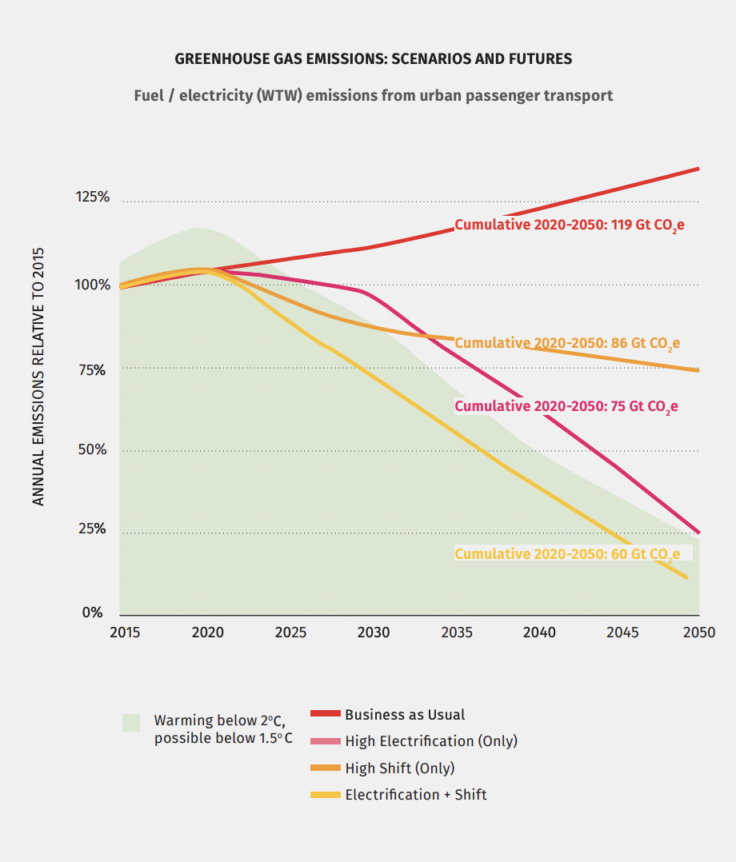
December 09, 2021
To Combat Climate Change, Electrification needs Compact Cities for Full Impact
The research is clear: without aggressively tackling rising global temperatures, there will be catastrophic global consequences within the coming decades.
In order to reduce climate emissions to meet a 1.5°C warming scenario, cities need to focus on increasing urban density, mass transit, cycling, and walking, while also encouraging electric vehicle use.
This year, reports have indicated that to keep temperatures from rising more than 1.5°C, there must be a major drop in greenhouse gas emissions. The transportation sector is the fastest growing contributor of greenhouse gas emissions (GHG) and must be drastically transformed for climate change to be adequately addressed.
At the Glasgow climate talks in November, electric vehicles were embraced as a potential climate solution. A multilateral agreement–signed by both public and private sector institutions–pledged to transition to 100% zero-emission sales of new cars and vans by 2040 globally and by 2035 in “leading markets.” Fifteen countries also agreed to a separate pledge to work toward 100% zero-emission sales of new trucks and buses by 2040. While electrification is an important step, alone it is not enough to address the climate crisis.
Without evolution in the transportation sector, other climate efforts will be in vain. For the urban transportation sector, the only way to keep global warming below 1.5°C is to redesign cities for walking, cycling, and public transit while also investing in electric vehicles. New research released by the Institute for Transportation Development Policy (ITDP) and the University of California, Davis in the report, “The Compact City Scenario-Electrified.”

Electrification has often been touted as a silver bullet: an easy solution that will alleviate the GHG burden from many car owners worldwide. This is not the case. Extensive vehicle electrification only lowers emissions by a portion of what is needed. However, by using electrification and dense, walkable cities, the planet will be able to drop GHG emissions to the level needed. With a two pronged approach, the GHG greenhouse gas emissions from urban passenger transport can be cut by 59 gigatonnes (Gt) CO2-eq by 2050.

Urban passenger transport in 2015 represented approximately 10% of all of humanity’s greenhouse gas emissions worldwide, but emissions have been increasing steadily as private vehicles have become easier to acquire in emerging economies. To meet the goals of the Paris Agreement and keep warming below 1.5°C to avoid catastrophic climate change, cumulative carbon dioxide equivalent emissions from urban passenger transportation must fall roughly by 54 gigatonnes in the next 30 years relative to their current trend.

Not only are compact cities better for the environment, but they provide movement in a much more equitable manner. Many households in developing countries, including in the United States, spend sometimes over a quarter, or maybe up to a third, of their income on transportation costs alone. This financial burden prevents people from gaining economic mobility and can keep them trapped in a cycle of poverty. With more density, cities become more walkable, allowing people to travel to destinations on foot or with public transit. Density can build equity.

Transforming urban transportation
The promotion of compact cities, along with investment in electrification, is the key to climate justice. Creating cities built around walking, bicycling, and public transport can dramatically reduce the demand for car travel, which will lower the infrastructure needs for cars—a significant driver of emissions for the sector. However, it is in the combination of the two policies – compact cities and electrification, that change is possible.
It is only in the combination of the two policies – compact cities and electrification, that change is possible.
Read more here.
